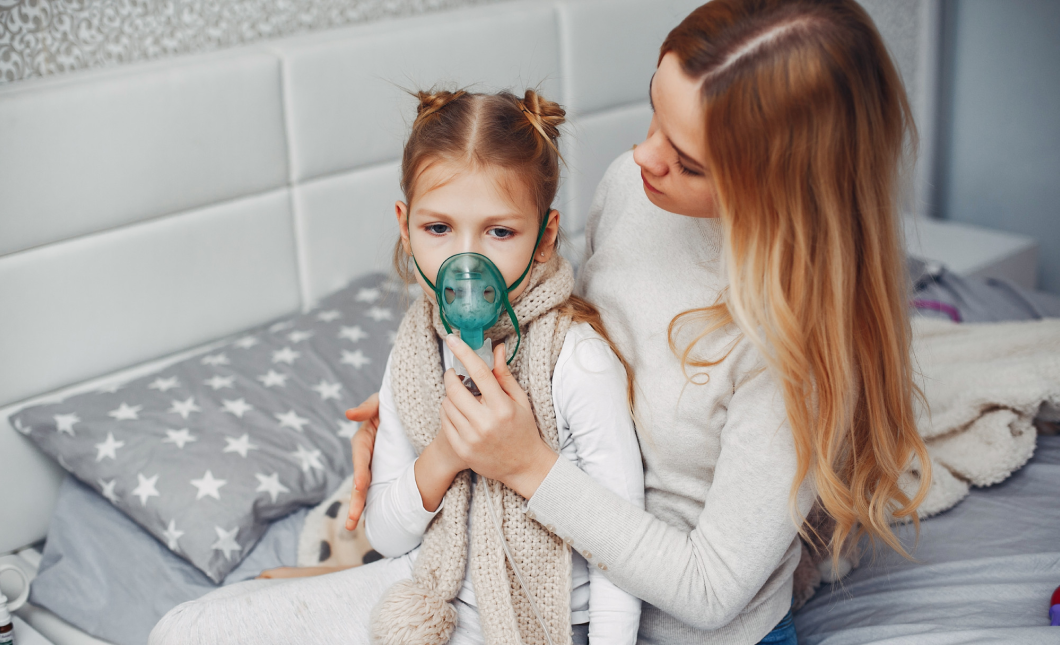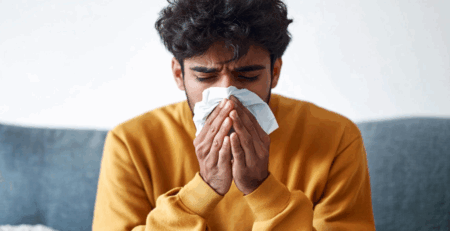When Breathing Becomes a Battle: A Homeopathic View on Childhood Asthma
Rohan was just five when his parents began to notice a pattern. Every few weeks, especially after a weather change or exposure to dust, he would develop a nagging cough, wheezing, and shortness of breath. His chest would tighten, and simple activities like running or playing would leave him breathless. Nights were the worst — his sleep broken by fits of coughing and gasping for air. Visits to the emergency room became frequent, and inhalers, though helpful, seemed like only a temporary fix. The diagnosis was clear: Childhood Asthma.
Asthma is a chronic inflammatory condition of the airways that causes them to become swollen and overly sensitive. In children, this results in episodes of wheezing, coughing, breathlessness, and chest tightness, which may be triggered by allergens (like dust, pollen, pet dander), weather changes, cold air, physical exertion, or respiratory infections. In northern India, the typical season is near April to May (during wheat harvesting) and also during October and November (During paddy harvesting) when the air is filled with hay from harvest and also the season change is occurring along with other polluting factors. Childhood asthma is especially distressing for both the child and the family, as it can interfere with growth, learning, and everyday play.
Asthma symptoms in children vary in intensity and frequency. Some children may have mild intermittent attacks, while others experience frequent, persistent symptoms that require continuous medication. The most common signs include repeated coughing (especially at night or early morning), cough noticed while laughing, crying and while playing or in the middle of sleep at night. A whistling or wheezing sound while breathing out, shortness of breath during physical activity, and a feeling of tightness in the chest. These symptoms may worsen during a viral infection or with exposure to environmental triggers.
Diagnosis of asthma in children is based on clinical history and symptom patterns. Doctors often inquire about frequency of wheezing, presence of allergies, family history of asthma or eczema, and response to bronchodilators like inhalers. Auscultation of the chest esp. during the acute phase often clinches the diagnosis for physician. In older children, lung function tests such as spirometry may be used to measure how well air moves in and out of the lungs. In younger children, where such tests are not feasible, diagnosis often relies on careful observation and clinical judgment.
Homeopathy offers a gentle and long-term approach to managing childhood asthma, aiming not just to control acute symptoms but to correct the underlying hypersensitivity of the immune system. Rather than simply suppressing wheezing or relying on inhalers, homeopathy works by strengthening the body’s own defense mechanisms, thereby reducing the frequency and severity of asthma attacks over time. Every child with asthma is different, and homeopathy takes this individuality into account. Remedies are selected not only based on the physical symptoms but also on the child’s emotional temperament, behavioral traits, and medical history. This makes homeopathy a truly personalized form of treatment.
Several homeopathic remedies are commonly used to treat asthma in children. Arsenicum Album is often prescribed when the child has great restlessness and anxiety, especially during attacks that worsen at night. The breathing is labored, and there may be a burning sensation in the chest. Spongia Tosta is helpful when there is a dry, barking, croupy cough with difficulty in breathing, often relieved by warm drinks. In cases where the cough is loose and the child feels suffocated on lying down, Antimonium Tartaricum may be used, especially when there is a lot of mucus rattling in the chest but difficulty in expectorating it.
Ipecacuanha is suited for children who have violent wheezing and a constant cough with nausea and vomiting of mucus. There is no relief even after coughing, and the chest feels constricted. Natrum Sulphuricum is frequently used in children who suffer from asthma that worsens with humidity or damp weather. These children may also have a history of suppressed emotions or may feel low and withdrawn.
In children with a history of recurrent colds or skin conditions like eczema that precede asthma, Sulphur or Tuberculinum may be indicated, especially when asthma seems to develop after skin eruptions have been treated with ointments. These constitutional remedies help in building long-term resistance and preventing relapses.
The advantage of homeopathy lies in its holistic and safe approach. There are no steroids or dependency-forming drugs involved, making it especially suitable for growing children. Though the number of cases of Br Asthma is very high in northern India but equally satisfying is the fact that thankfully, homoepathy offers the best ever relief and permanent cure in almost all cases of childhood asthma. We boast of treating and making the child free from asthma forever with homeopathic treatment within two to three seasons in thousands of cases.
Childhood asthma, though common, should not be treated as just another phase a child will “outgrow.” With proper care and a constitutional homeopathic approach, children like Rohan can not only gain relief from symptoms but also enjoy long-lasting improvement in health and vitality — breathing freely, playing joyfully, and sleeping peacefully.



